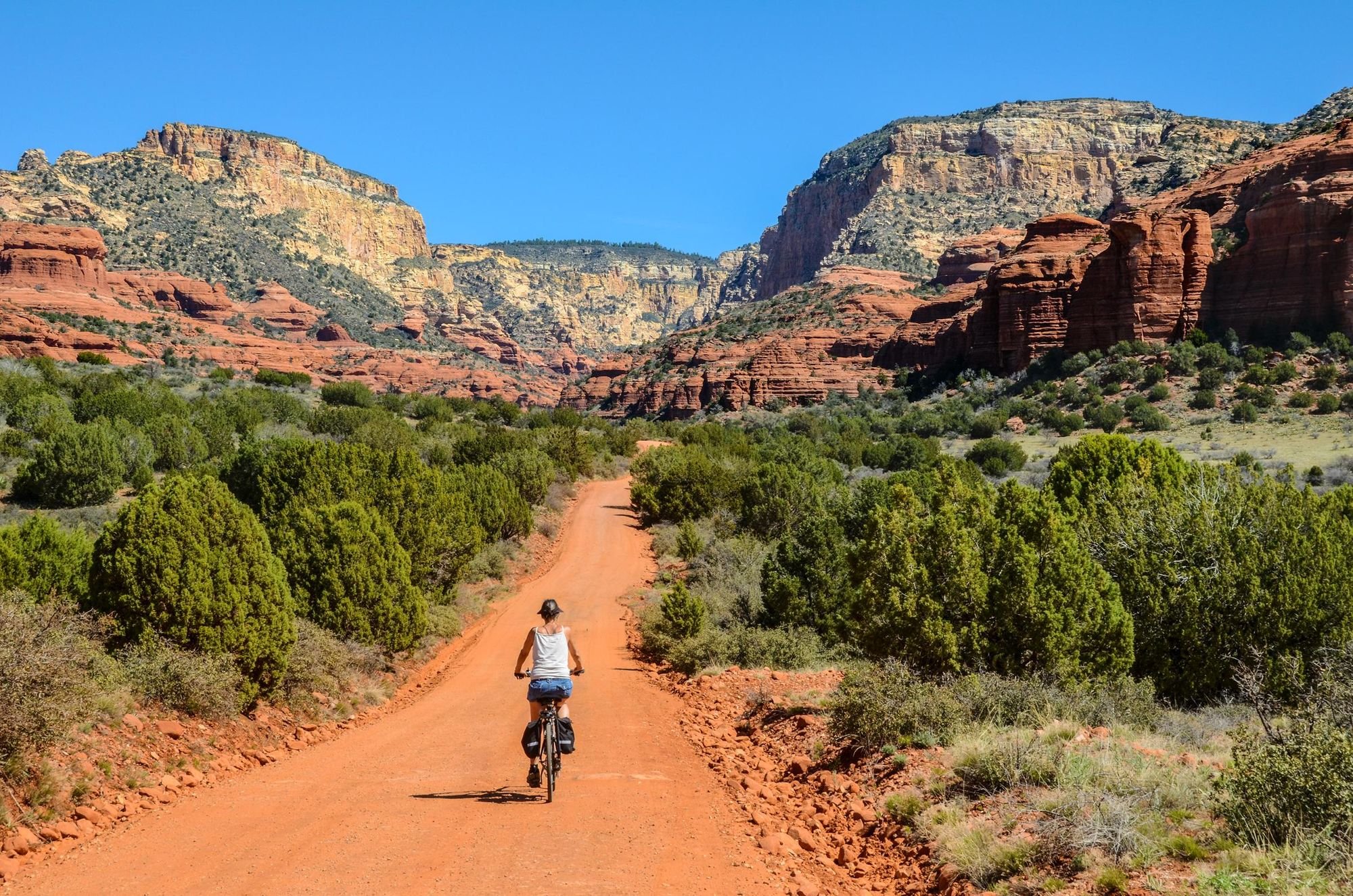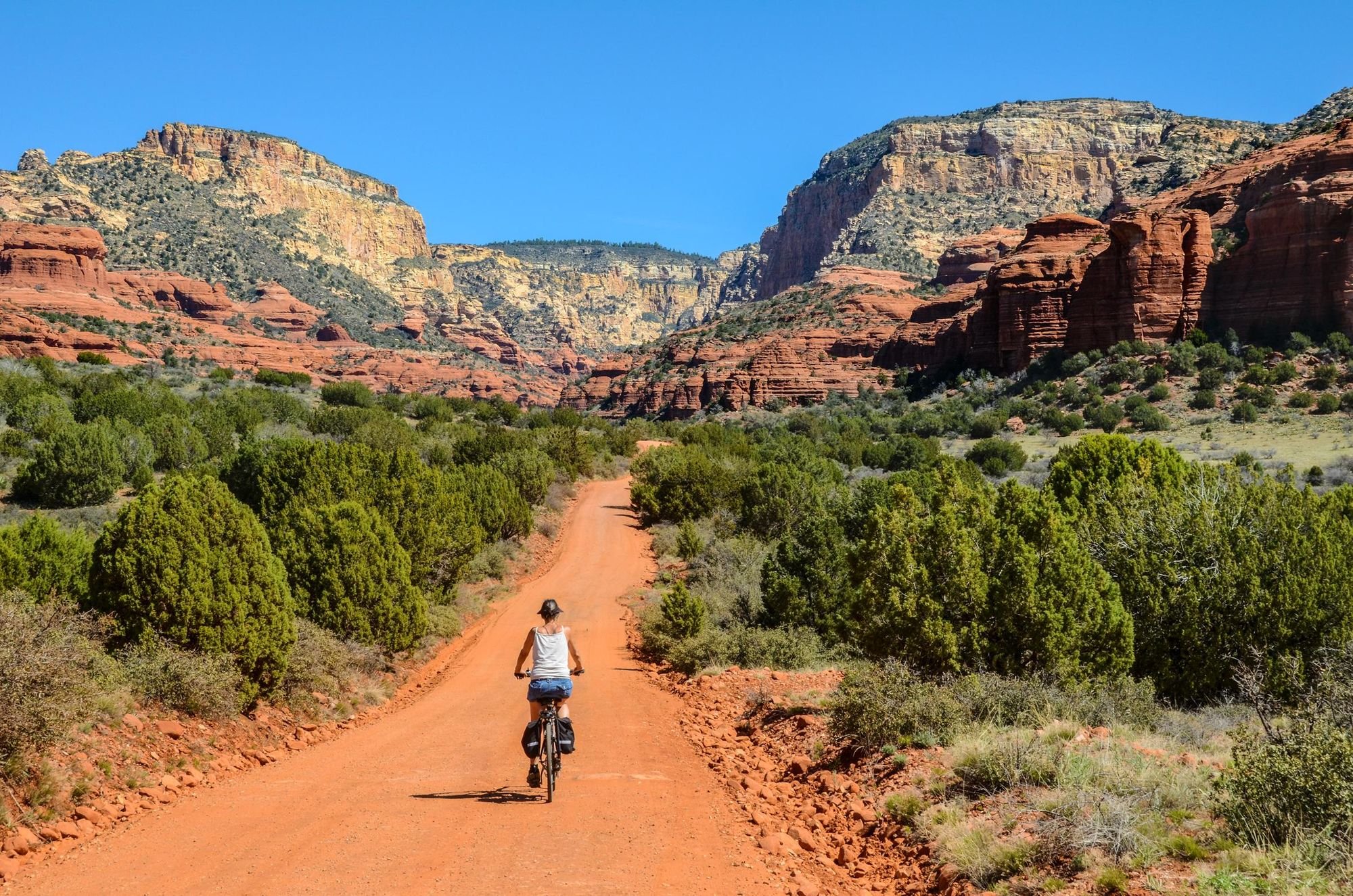
You don't have to hang up the bike when winter arrives in the United States - you just have to know where to go riding. Certain parts of America stay dry and (somewhat) warm even in winter, while others have infrastructure which allows you to ride even if things are cold and muddy. So you can still find ideal conditions - whether you prefer road cycling, gravel riding, flowy mountain biking or fat biking on groomed trails, surrounded by trees weighed down by snow.
The destinations we’ve picked for this list of the best winter cycling destinations in the US will be no secret to anyone. They’re places where you can combine reliable winter conditions with a strong local cycling culture - and trails aplenty.
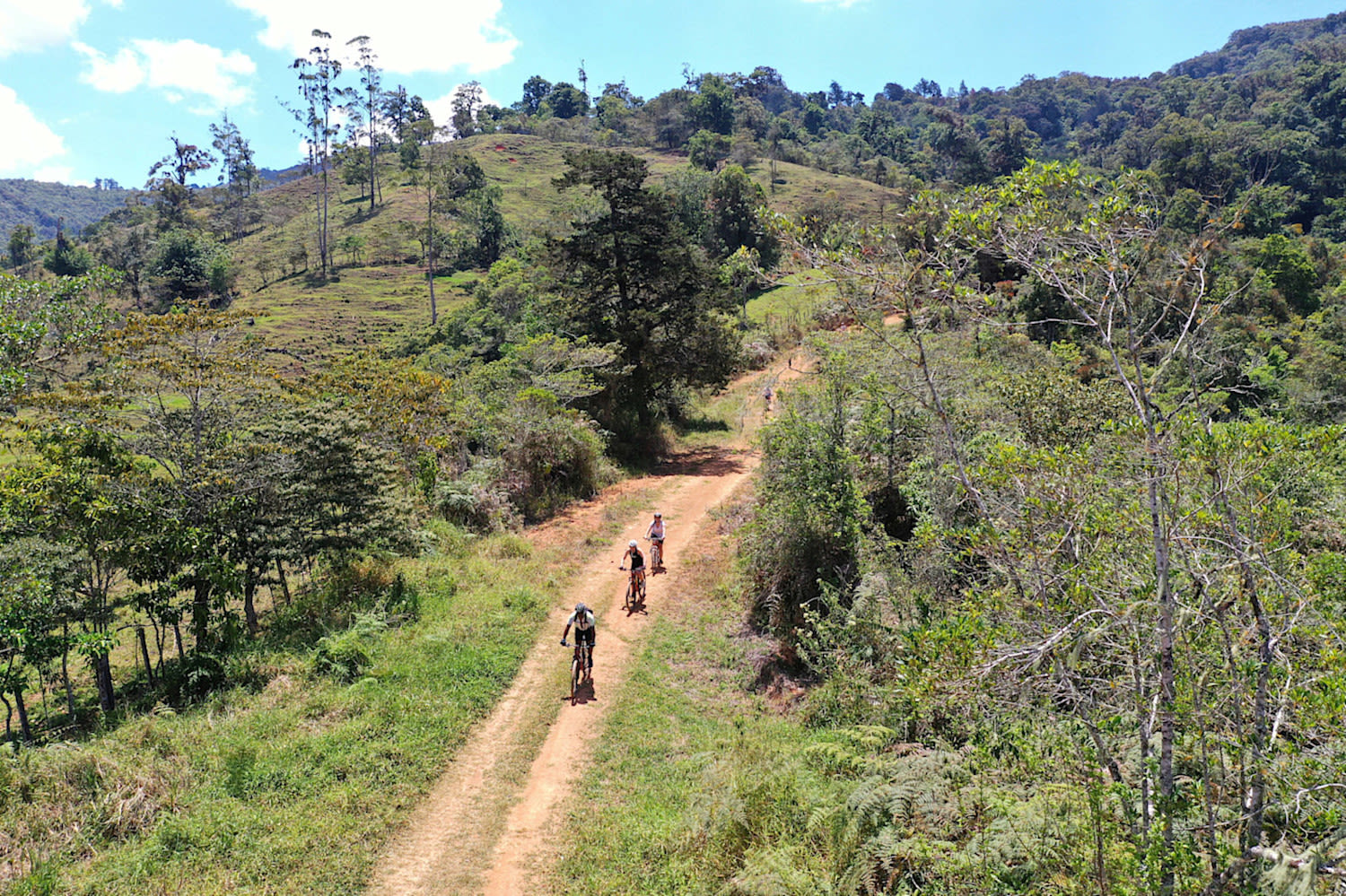
We’ve looked at each of these destinations through a two-wheeled lens. So we’ve thought not only of the climate, but also of their signature ride, the infrastructure, accessibility and even sustainability hooks, too. Each has a real love for the bike.
It’s island-hopping by bike - on an old converted railway.
The result is this list: a practical reference for riders planning their next adventure, with a dataset rich enough to show you why each has been selected.
Of course, we’ve probably still left off your favourite spot. Do tell us what it is!
1) Tucson, Arizona
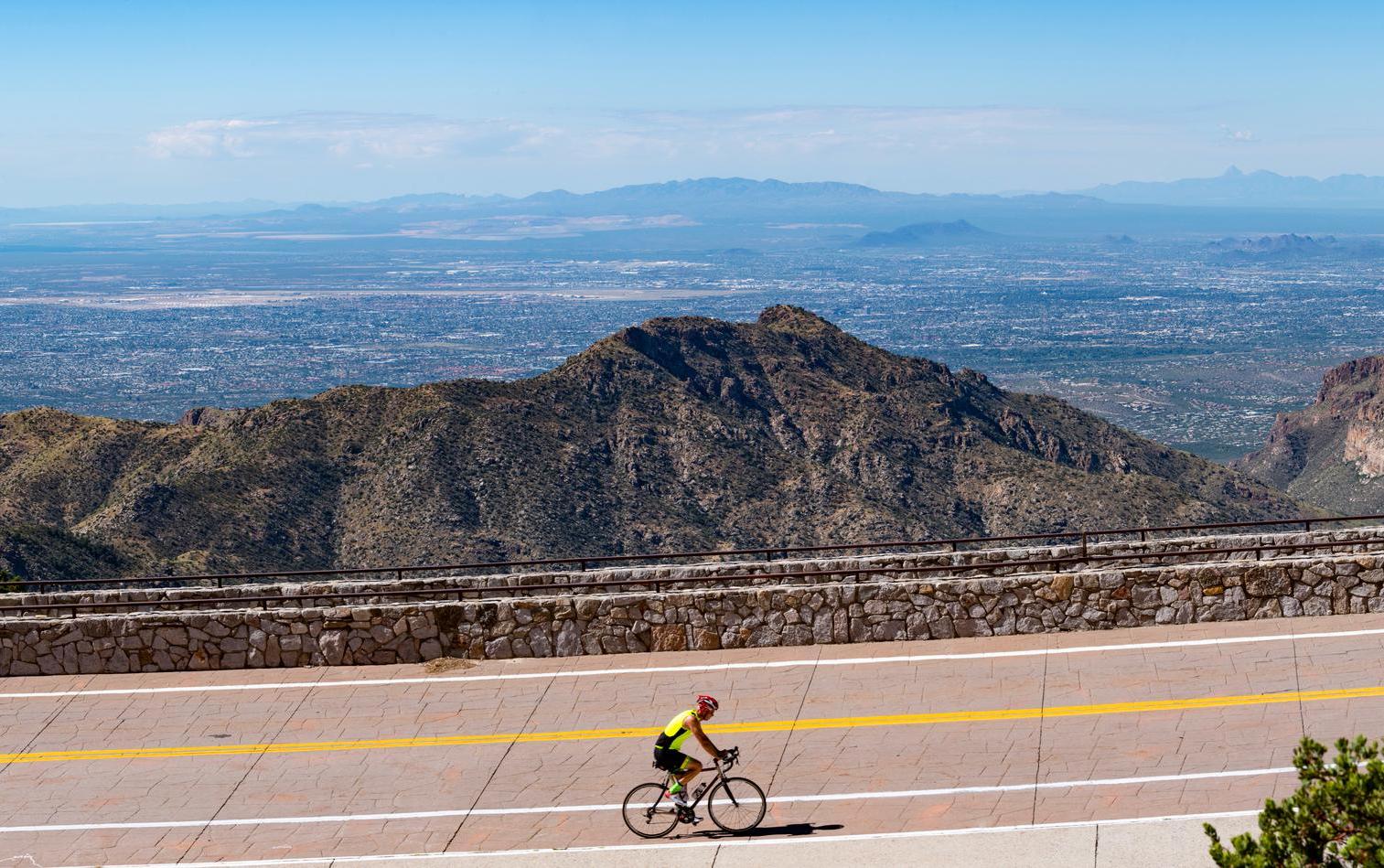
- Jan climate: 68°F/39°F (20°C/4°C); 0.8 inches (21mm); approx. 3 rainy days.
- Signature climb: Mt. Lemmon climb - 28 miles (45km), 7,000 ft (2,133m) ascent.
- Bikeways: Over 1,000 miles (1,609km) of regional bikeways.
- Airport: Tucson International Airport (TUS).
- Sustainability: The car-free Loop is an epic bit of infrastructure.
Why it works: Tucson has become the Southwest’s premier winter training hub. Situated in the Sonoran Desert, the riding here mixes high-altitude road climbs with a huge car-free bike network. Think saguaro cacti and mountain views.
This is no secret, of course. Pro training camps regularly run here in the off-season. Local cafes are busy with cyclists - and none more so than Le Buzz, a cafe famous for its cookies, and as the starting point for one of the country’s most famous climbs. A tough ascent of Mount Lemmon takes you from low-lying desert to the ski resort of Summerhaven, up above the 9,000ft (2,743m) mark.
Gates Pass is another iconic (short but serious) climb which passes Old Tucson and the Desert Museum, and back in town, there’s exceptional infrastructure. Most notably, The Loop an 131-mile (210km) network of car-free, multi-use paths around the metropolitan area and Santa Cruz River.
There are superb gravel tracks an hour south of Tucson in Patagonia, AZ, on quiet ranch roads. The Spirit World Gravel Grinder runs through here each October.
2) San Diego, California
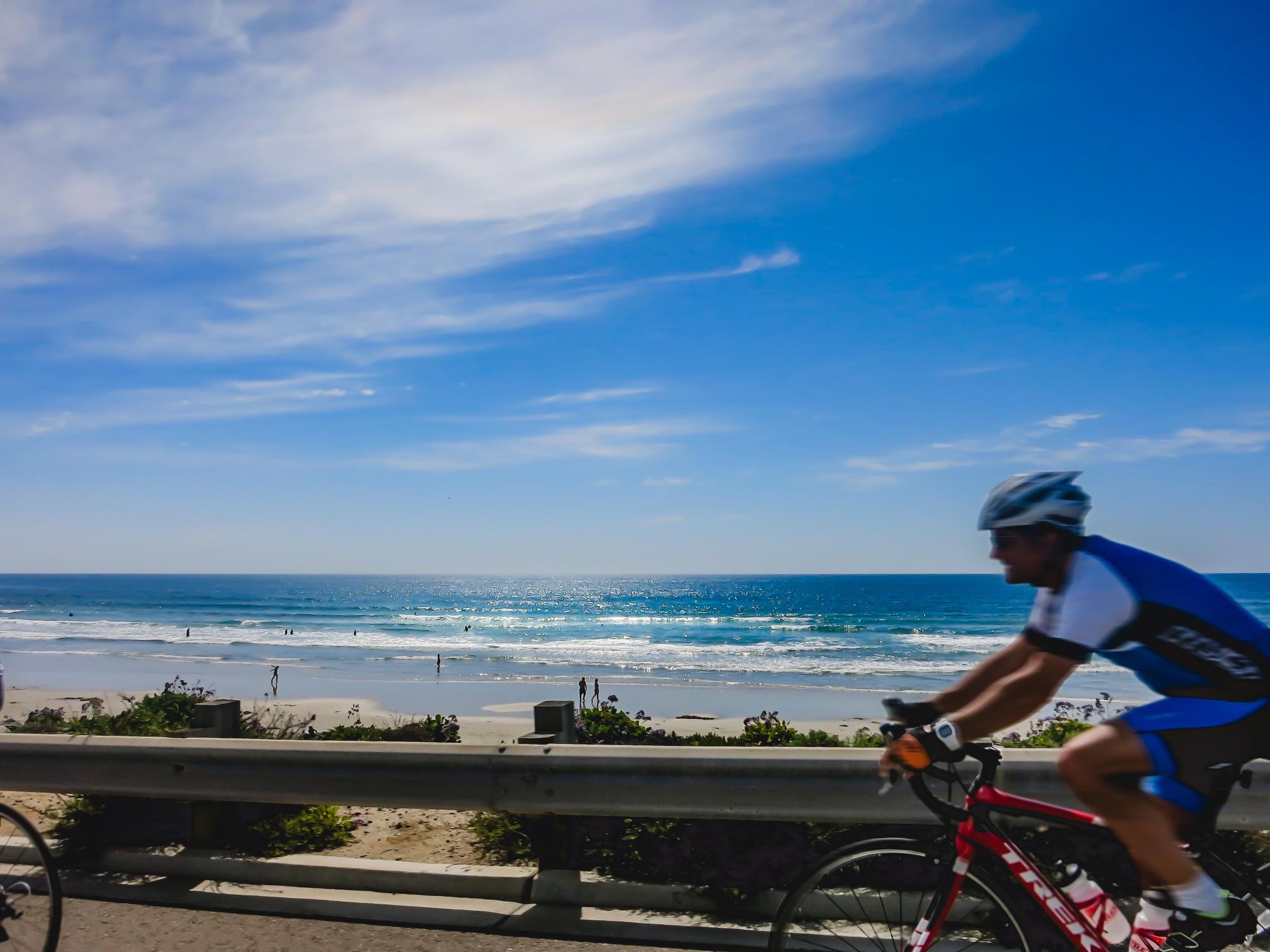
- Jan climate: 66°F/48°F (19°C/9°C); 1.9 inches (48mm); 4-5 rainy days.
- Signature ride: Palomar Mountain climb - 12.4 miles (20km), 4,480 ft (1,365m) ascent.
- Infrastructure: Over 1,800 miles of bikeways (2,896km).
- Airport: San Diego International Airport (SAN).
- Sustainability: Rail and bikeway links make it possible without much driving.
Why it works: We wanted to include at least one SoCal destination in this list. The reason we opted for San Diego is because it’s a mosaic destination - offering a mixture of coastal leisure rides and city culture with iconic canyon climbs.
The bike network in San Diego is unusually strong for a US city, with SANDAG mapping over 1,800 miles (2,896km) of bikeways. That’s also supported by rail connections that let riders piece together one-way routes. The Coaster Commuter Rail between Oceanside and downtown San Diego has bike racks, and the Amtrak Pacific Surfliner also has room for seven bikes (reservation required), opening up longer rides - up the coast into Orange County and beyond.
On your road bike, cruise the Rose Canyon path, head up the Pacific Coast Highway or for a real challenge, take on the Palomar mountain road. It’s a 12.4 mile (20km) ride at an average of 7% gradient. There’s plenty of mountain biking and gravel riding here too.
3) Florida Keys, Florida
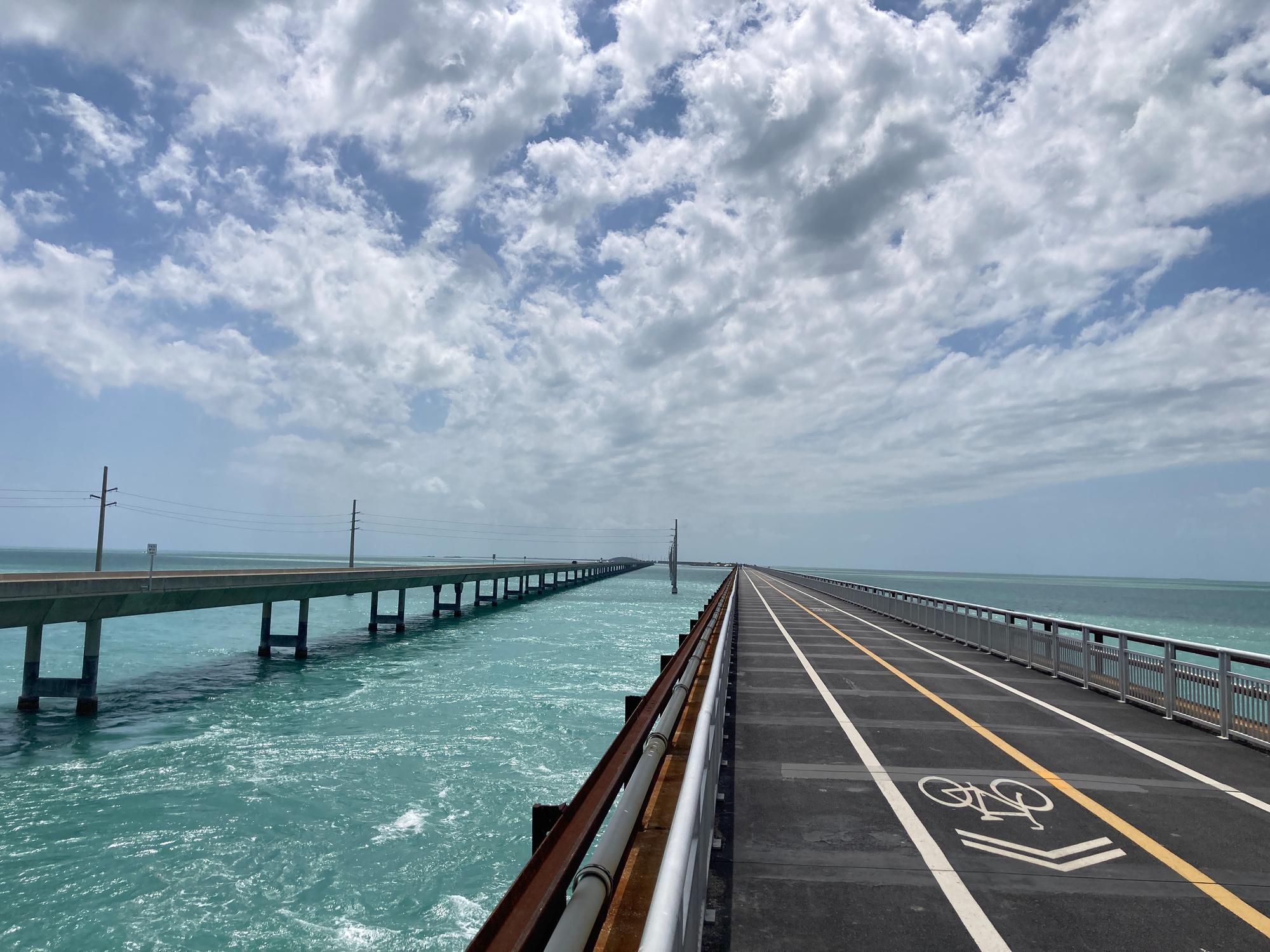
- Jan climate: 75°F/66°F (24°C/19°C); 1.7 inches (43mm); 8 rainy days.
- Signature ride: Florida Keys Overseas Heritage Trail, 90 miles (145km), flat
- Infrastructure: Paved, separated bikeway, along the US-1.
- Airport: Key West International Airport (EYW).
- Sustainability: The rail-trail revamp of the historic Overseas Railroad.
Why it works: The Florida Keys Overseas Heritage Trail is one of the most popular cycles in America for good reason. You get to cruise a flat route, with tropical turquoise water on either side, and plenty of opportunities to stop for snorkelling, fishing, paddling or seafood en route.
It's the best place I've been any time, anywhere...
It’s island-hopping by bike - on an old converted railway.
The route offers access to so many points of interest, from the Everglades National Park to the Great White Heron National Wildlife Refuge and the Crocodile Lake National Wildlife Refuge. You’ll ride over historic bridges, mangrove forests and reach the southernmost point of the continental US in Key West, marked by a painted buoy. The trail did take some damage from Hurricane Ian in 2024-2025, so at times you’ll have to pedal on a roadside bike lane.
As Hemingway wrote: “It's the best place I've been any time, anywhere. Flowers, tamarind trees, guava trees, coconut palms.” Scenic beauty, at a relaxed pace.
4) Sedona, Arizona
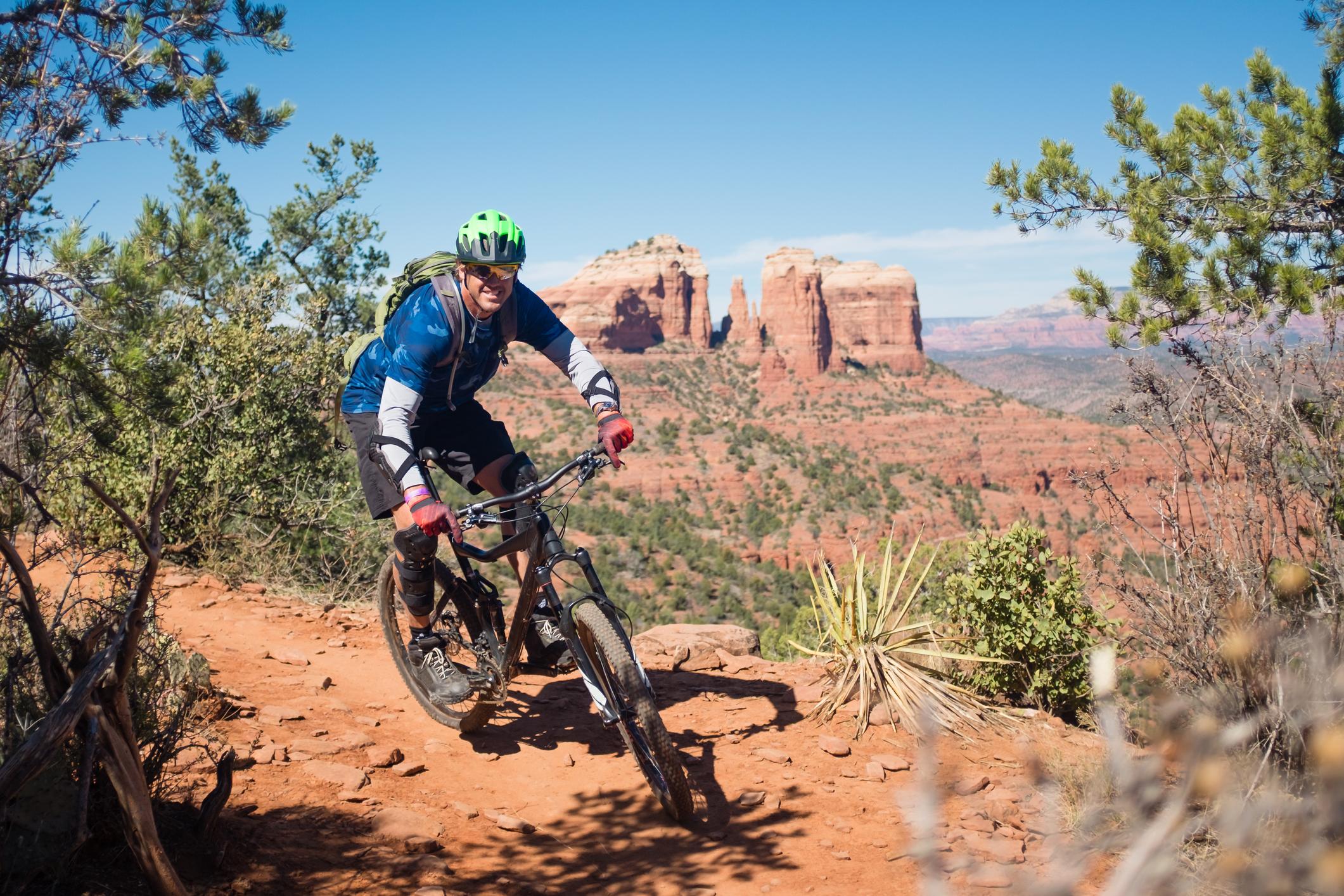
- Jan climate: 57°F/32°F (14°C/0°C); 2 inches (51mm); 4 rainy days.
- Signature ride: The Hiline Trail pro-line trail, three miles (4.8km).
- Infrastructure: This is a year-round mountain biking destination.
- Airport: Phoenix Airport (PHX) or Flagstaff Airport (FLG).
- Sustainability: Year-round use spreads the crowds.
Why it works: Sedona is mountain biking’s red-rock temple. Winter brings crisp temperatures and the crowds are thinner than in peak season, letting riders tackle slickrock features, challenging climbs and technical descents in peace.
The Hiline Trail is perhaps the pick of the lot (strictly for expert riders only). It's in the trail network above Village of Oak Creek and is roughly three miles (4.8km) or 8 miles (12.8km) if included in a loop. Think tight routes through the signature red-rock of the area, with big views of the sandstone buttes and shrubbery, and some seriously technical, narrow, trails with steep drops.
Advocacy groups in this area keep the trails in top shape here. The scene is mountain biking-centric, drawing riders from around the world.
If you’re going to be flying into Phoenix, sample some of the mountain biking there, too. There’s an abundance of dreamy singletrack near the city. Check out the National Trail in South Mountain - another famous route boasting big views, tough technical rock sections and cactus-lined landscapes.
5) Texas Hill Country, Texas
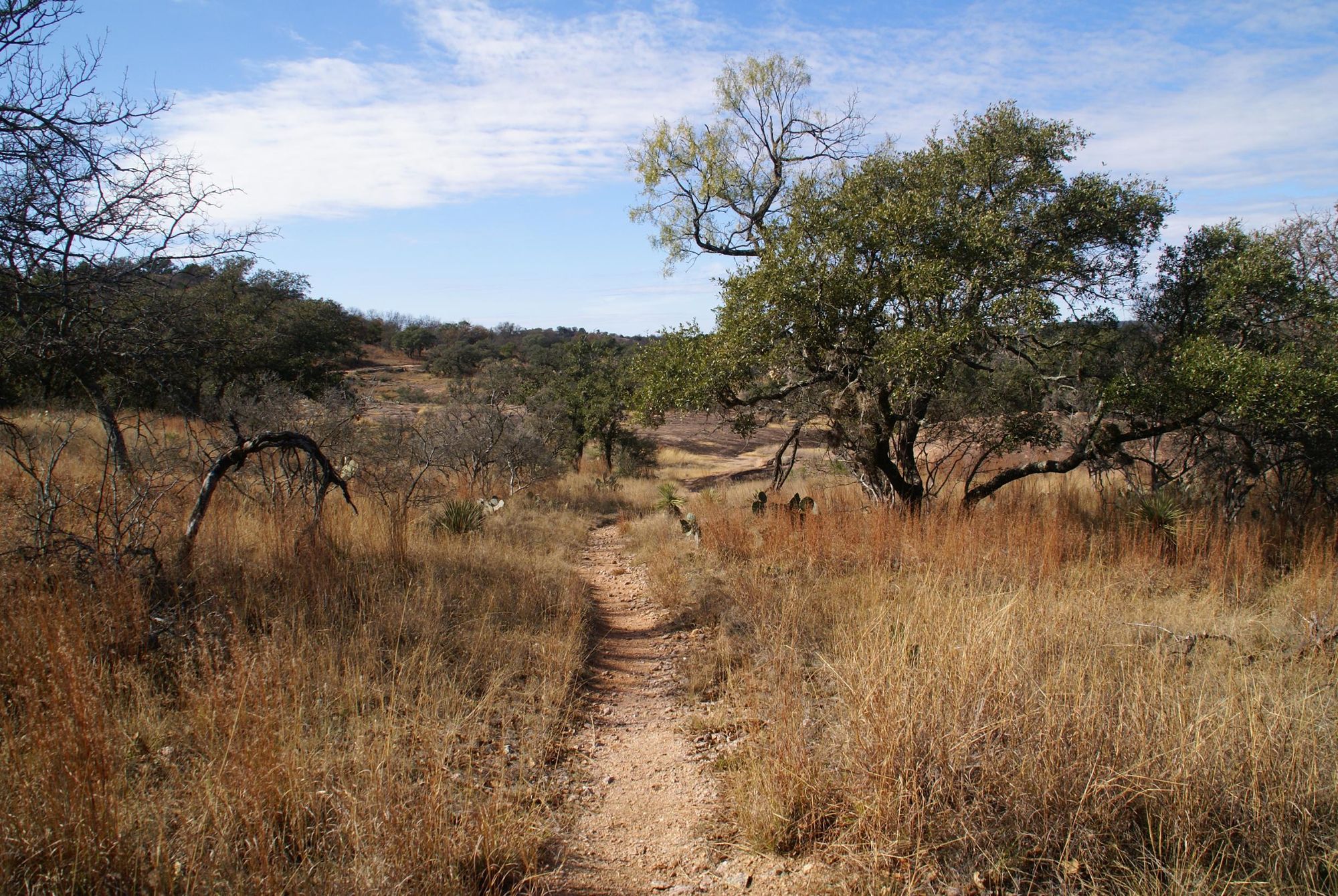
- Jan climate: 57°F/32°F (14°C/0°C); 1.5 inches (39mm); 4 rainy days.
- Signature ride: The Castell Grind.
- Infrastructure: Low-traffic county roads.
- Airport: Austin-Bergstrom International Airport (AUS) or San Antonio International Airport (SAT).
- Sustainability: Small-town overnights spread tourism income locally.
Why it works: The Hill Country offers rolling gravel across limestone lowlands and oak-dotted ranchlands. Winter is variable but usually dry, and often mild enough for long loops. Stops in German bakeries and BBQ joints are a must, not to mention the many local wineries along the way.
There’s a little bit of everything here. Road cyclists will want to get out to the back country roads of Gillespie County. The Flat Rock Ranch trails offer over 24 miles of single track including long technical downhill mountain biking on a 1,300 acre family-owned cattle-ranch. And it’s home to some of the best gravel tracks in Texas, winding through granite rocks. The Castell Grind - an annual gravel event - runs in April each year here, 90 minutes west of Austin, near the Llano River
The Enchanted Rock area is also home to heaps of gravel tracks, as pictured above.
6) Roanoke, Virginia
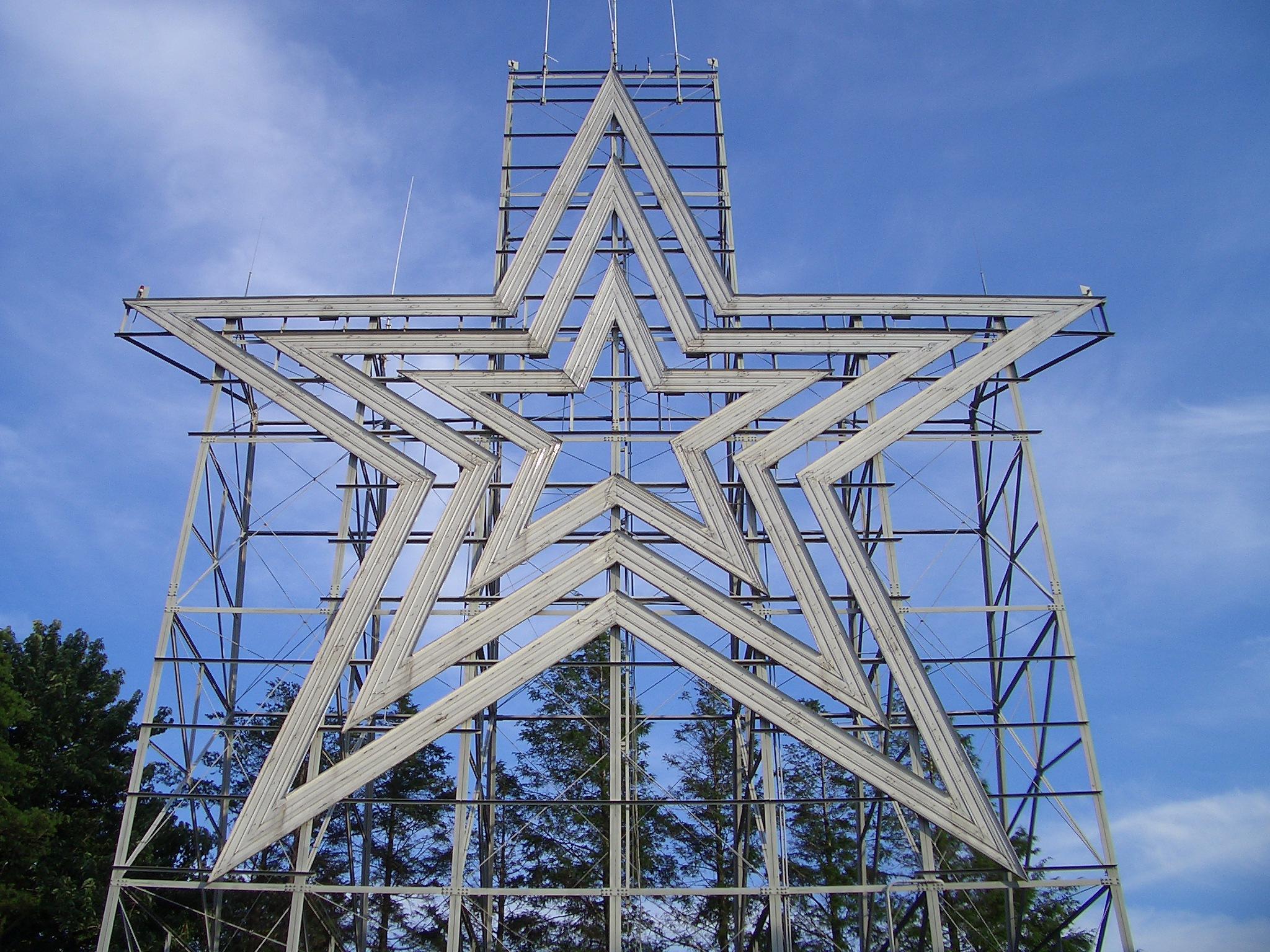
- Jan climate: 46°F/28°F (8°C/-2°C); 2.1 inches (53mm); 10 rainy days.
- Signature ride: Virginia’s Blue Ridge, an IMBA Silver-Level Ride Center.
- Infrastructure: Purpose-built singletrack and urban greenway for cycling.
- Airport: Roanoke-Blacksburg Regional Airport (ROA).
- Sustainability: IMBA standards ensure stewardship. Roanoke is a stop on the Northeast Regional Amtrak service, between Boston and Washington, D.C.
Why it works: Roanoke has transformed into the East Coast’s mountain biking capital. There are over 300 miles (482km) of mountain biking trails here; including access to backcountry riding in the George Washington & Jefferson National Forest and the frost-touched forests and reservoirs of Carvins Cove.
You can get some lingering snow here in winter, but equally, you also get days with unusually warm weather for January.
Trails flow right from downtown into the Blue Ridge. Mill Mountain urban park is just a short ride from the centre of Roanoke. There’s a beginner, intermediate and expert trail in Jefferson National Park, near Arcadia and the 14-mile Dragon’s Back route on the rocky ridge of North Mountain is great for skilled riders.
When you’re back in Roanoke, get a Cheesy Western - a greasy cheeseburger with fried egg, pickles and relish - from the legendary Texas Tavern. It opened back in 1930 and the menu hasn’t changed much since. There’s plenty of craft brewery spots to explore too. We’d recommend Golden Cactus Brewing or Big Lick.
7) Moab, Utah
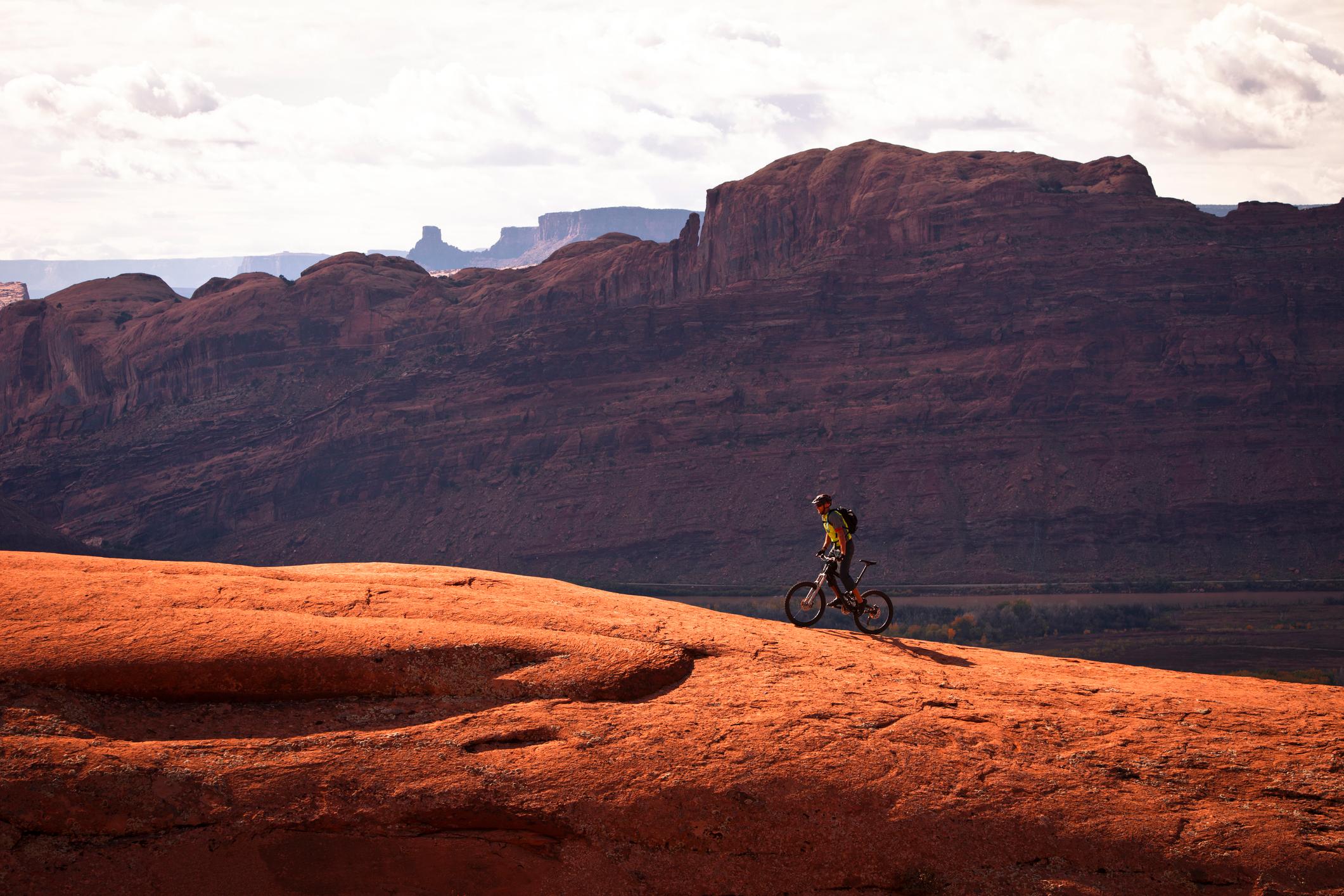
- Jan climate: 44°F/21°F (7°C/-6°C); 0.5 inches (12mm); six rainy days.
- Signature ride: The Slickrock Trail, 12.7 miles (20km), 760ft (231m) ascent.
- Infrastructure: It’s scaled back in winter but shuttles still run.
- Airport: Canyonlands Regional Airport (CNY), Grand Junction Regional Airport (GJT) or more likely, Salt Lake City International Airport (SLC).
- Sustainability: Winter riding disperses pressure across the calendar.
Why it works: No list of winter mountain biking locations is complete without a mention of Moab. This riding haven is a little more temperamental in winter - cooler, quieter, with the occasional frost and even snow at higher elevations. But it still makes for amazing riding. It’s still Moab, but without the high-season crowds.
The Utah Tourist Board recommends the Amasa Black trail network for winter. It’s a challenging area with technical drops and demanding climbs, but there are also some intermediate loops. Dead Horse Point State Park - with its desert landscape of canyons and high woodland - is ideal riding in winter, particularly for beginners and intermediates more set on views than tricky terrain.
It’s still Moab, but without the high-season crowds.
More experienced riders can take on the Slickroad Trail - a trail famed for its steep, technical route over petrified sand dunes and rolling Navajo sandstone. The cooler climate can make the climb just a little nicer.
8) Bentonville, Arkansas
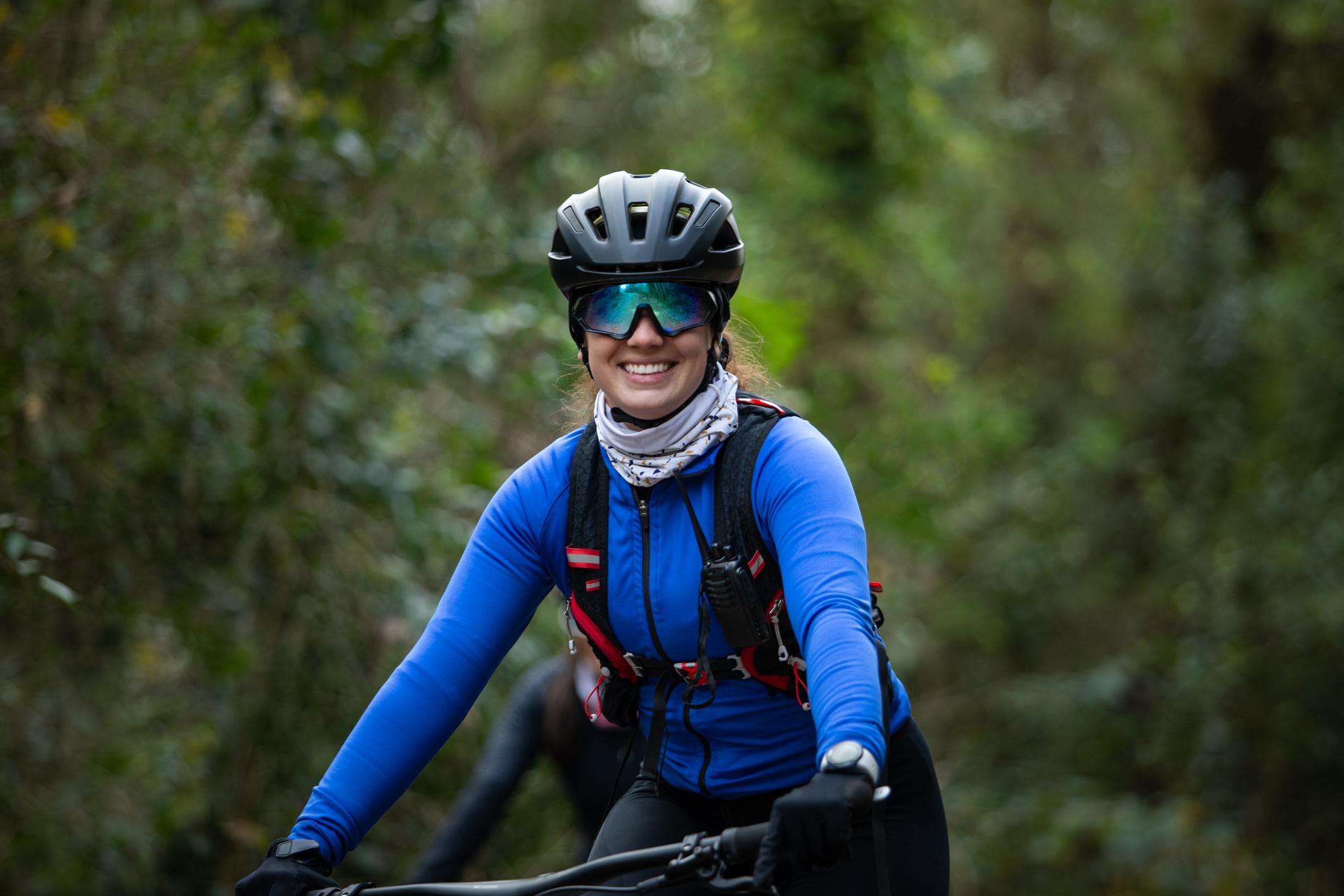
- Jan climate: 48°F/28°F (9°C/−2°C); 2.3 inches (58 mm); 7–8 rainy days.
- Signature ride: Slaughter Pen singletrack.
- Infrastructure: IMBA Silver-Level Ride Center with 250+ miles of singletrack, much of it surfaced for year-round riding.
- Airport: Northwest Arkansas National Airport (XNA).
- Sustainability: Strong local advocacy and philanthropic investment (notably from the Walton family of Walmart fame) have turned Bentonville into a model of cycling-led urban transformation.
Why it works: Once a quiet corner of northwest Arkansas, Bentonville is now a mountain biking haven - packed with purpose-built trails that flow right from downtown coffee shops and breweries into the woods. Unlike many destinations, much of Bentonville’s singletrack is surfaced with crushed rock, which drains quickly and means that riding possible through the damp southern winters.
January can be chilly here, no doubt, but the climate is often mild enough to keep the wheels turning, and there's relatively low snowfall. Trail systems like Slaughter Pen (which has over 40 miles/64km of singletrack), Coler (a designated mountain bike preserve), and the Back 40 loop offer year-round access, while regional networks stretch into Bella Vista and Hobbs State Park.
What makes Bentonville stand out is the infrastructure density: you can spend a weekend exploring without ever loading a bike on a car. The riding culture is vibrant and intentiona. The Life Time Big Sugar Classic runs here each October.
9) Anchorage, Alaska (Fat Biking)
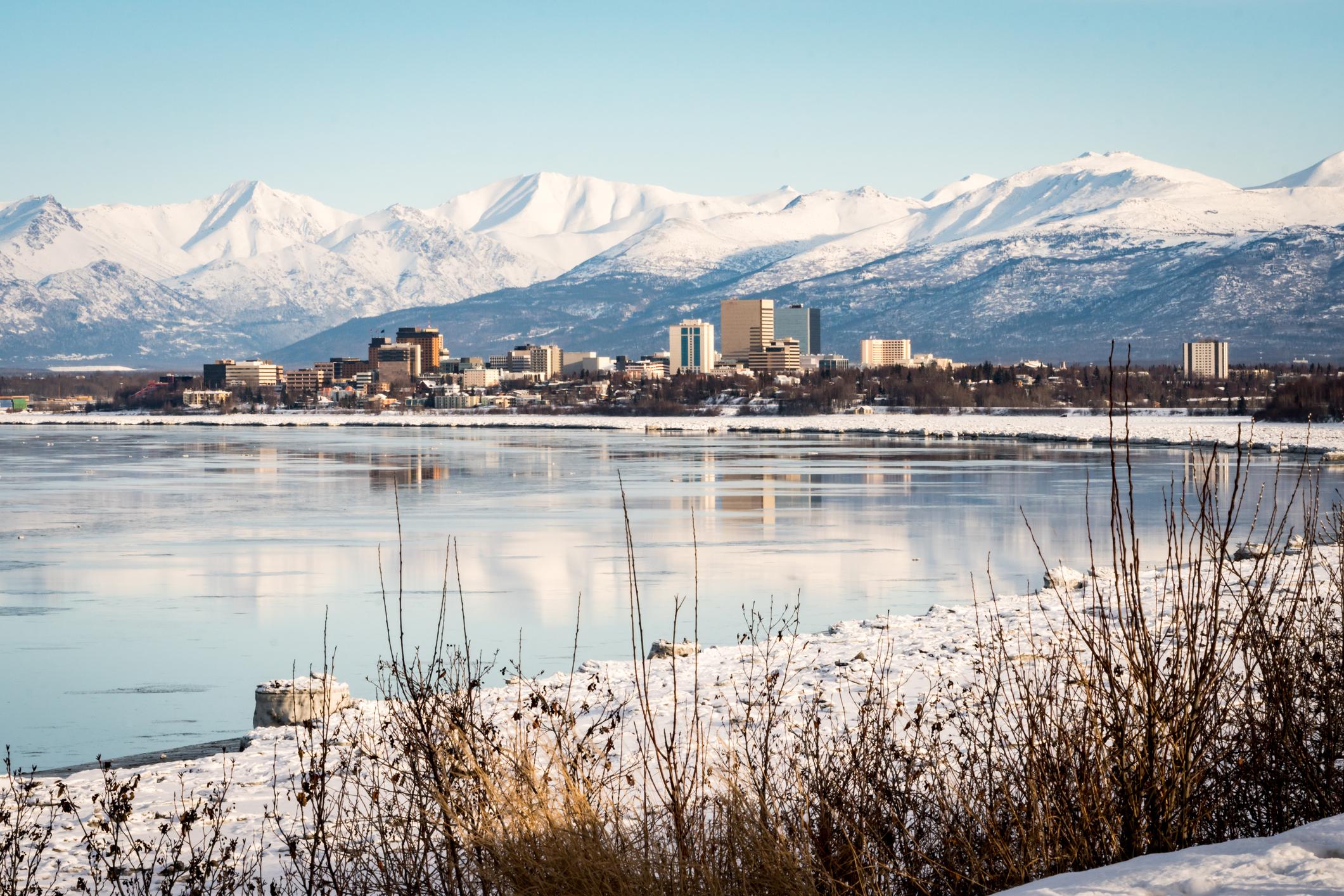
- Jan climate: 23°F/14°F (−5°C/−10°C); frequent snow.
- Signature ride: Kincaid Park, or Far North Bicentennial Park.
- Infrastructure: Anchorage has 150 miles of multi-use forest trails in winter.
- Airport: Ted Stevens Anchorage International Airport (ANC).
- Sustainability: Fat biking brings local businesses cycling custom in low season.
Why it works: A snowy city where the average temperature in January is 23°F? On a list of cycling destinations? Yup, that’s right. Just not on your regular tires. It’s time to get the fat ones out for this one.
Anchorage is the spiritual home of fat biking. Locals ride on wide-tire bikes through snowpacks, and visitors can climb on one too to explore an enormous network of groomed winter trails in the surrounding forests, too.\
Anchorage is proof that cyclists don’t hibernate, even in snow.
Most people don’t own a fat bike, so we’d recommend hiring a local guide to get your ride and to show you around. Think white trails, lined with spruce trees weighed down with powder - and snowy mountains on the horizon.
Events like the Iditarod Trail Invitational - the world’s longest winter ultra-marathon, completed by fat bike, foot and ski - began here, cementing Alaska’s role in shaping global fat-bike culture. Anchorage is proof that cyclists don’t hibernate, even in snow.
10) Big Island, Hawaii
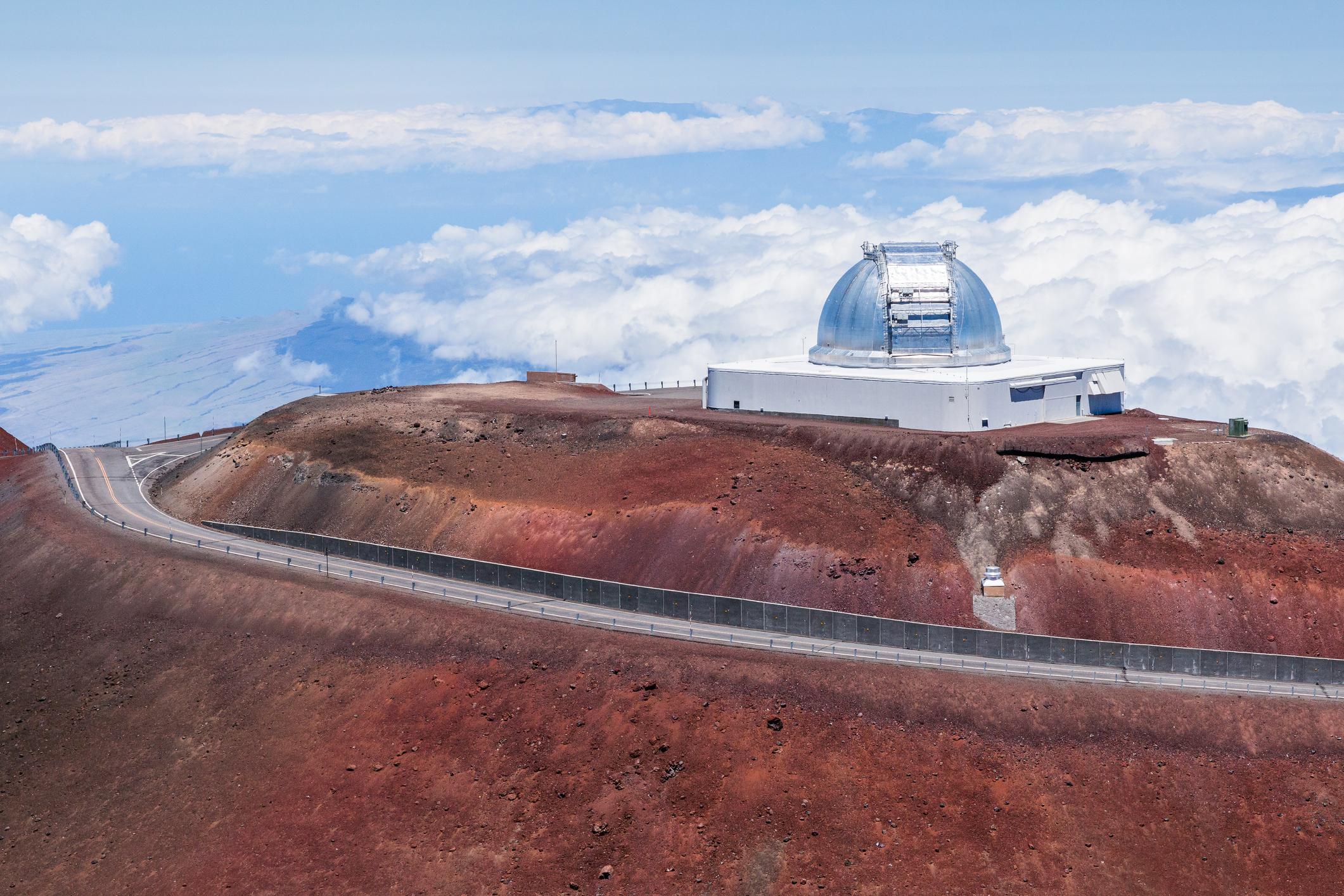
- Jan climate: 81°F/66°F (27°C/19°C); rain varies depending on climate zone.
- Signature ride: Mauna Kea, 42 miles (68 km), 13,796 ft (4,205m) ascent.
- Infrastructure: Long, smooth coastal highways, access to high-altitude climbs.
- Airport: Kona International (KOA) or Hilo International (ITO).
- Sustainability: The island faces overtourism pressures. Using local rental shops, and eco-certified stays benefits residents and minimises car dependence.
Why it works: We’re sure we don’t need to explain why Hawaii is good for cycling in the winter. While most of the US is cold, the 50th state is tropical.
The Big Island is cycling on a grand scale. Nowhere else in the US can you climb from sea level to nearly 14,000ft (4,267m) in a single (extremely demanding) ride, passing from tropical rainforest into barren volcanic moonscape. That’s what you’ll face on Mauna Kea, a climb which some call the toughest in the entire world.
For most, the Kailua Kona loop is more approachable: a rolling highway ride - 50 miles (80km) one way - along lava fields, windswept coast, and endless ocean views. This route is used for the Hawaii Ironman World Championship.
Maui’s riding scene is great too, but the Big Island offers sheer scope - massive climbs, multi-hour coastal spins, and remote gravel exploring. And from December through to March, you might spot a whale breaching off the coast, too.
Comparison Matrix (At a Glance)
| Destination | Jan High/Low | Jan Precip. | Signature Ride/Trail | Infrastructure Snapshot | Airport |
|---|---|---|---|---|---|
| Tucson, AZ | 66/39°F | 0.8 in | Mt. Lemmon 27.8 mi / 7,000 ft | >1,000 mi bikeways; 137-mi Loop | TUS |
| San Diego, CA | 68/48°F | 1.9 in | Palomar 12.4 mi / 4,480 ft | 1,800 mi bikeways | SAN |
| Florida Keys | 75/66°F | 1.7 in | Florida Keys Overseas Heritage Trail | Continuous path segments | EYW |
| Sedona, AZ | 56/32°F | 2 in | Hiline Trail | Year-round trail networks | PHX/FLG |
| TX Hill Country | 57/32°F | 1.5 in | The Castell Grind | Quiet county roads | AUS/SAT |
| Roanoke, VA | 46/28°F | 2.1 in | IMBA Ride Center, 300+ mi | Signed mountain biking networks | ROA |
| Moab, UT | 44/21°F | 0.5 in | The Slickrock Trail 12.7 mi, 760 ft | Huge trail portfolio | CNY/GJT/SLC |
| Bentonville, AR | 47/27°F | 2.3 in | Slaughter Pen | IMBA Silver Ride Center; 25-+ miles of singletrack | XNA |
| Anchorage, AK | 23/14°F | frequent snow | Take to the fat biking trails | 578 mi city trail system | ANC |
| Big Island, HI | 81/66°F | Varies by climate zone | Mauna Kea, 42 mi / 13,796 ft ascent | Long coastal highways; access to high-altitude climbs | KOA / ITO |
FAQs: Winter Cycling in the US
What is the warmest US cycling destination in winter?
Key West in the Florida Keys is consistently the warmest on the American mainland, with January highs around 75°F (24°C). It’s a flat, tropical ride along the Overseas Heritage Trail, ideal for those seeking warmth and scenery over climbing. Of course, Hawaii can often have that beat. The Big Island averages 81°F (27°C) in winter).
Where can you ride fat bikes in winter?
Anchorage, Alaska is a top US fat-biking destination, with groomed snow trails specifically designed for fat bikes, backed by strong local winter riding cultures. You can also find trails in Crested Butte, Colorado, and many ski resorts offer fat biking.
Is Sedona rideable in January?
Yes. Sedona stays cool but accessible in January, with average highs around 56°F (13°C). Trails remain open year-round, though snow occasionally dusts the red rocks. Winter is often the best time to avoid heavy crowds.
Can you cycle in Moab during winter?
Moab is colder in January, but many lower-elevation networks stay rideable when dry. Iconic higher trails such as Porcupine Rim are likely to be unrideable and covered in snow, so winter shifts focus to sandy and slickrock loops closer to town.
Which US city has the best cycling infrastructure for winter?
Tucson, Arizona stands out. Tucson offers The Loop, an 131-mile (210km) network of car-free trails to ride - and there’s so much to cycle beyond this too.
What gear do you need for winter cycling trips?
In warm destinations like Tucson or San Diego, standard cycling gear plus a light jacket suffices. For fat-bike destinations, riders need studded or wide 4-5 inch tires, insulated boots, thermal layers, and often pogies for handlebar warmth.
Which destinations are best for training camps?
Tucson and San Diego are the go-to US bases for winter road cycling camps, offering long climbs, reliable weather, and extensive infrastructure. Both cities regularly host pro teams and clubs through the winter months.
Inspired? Check out our full range of cycling holidays now!

